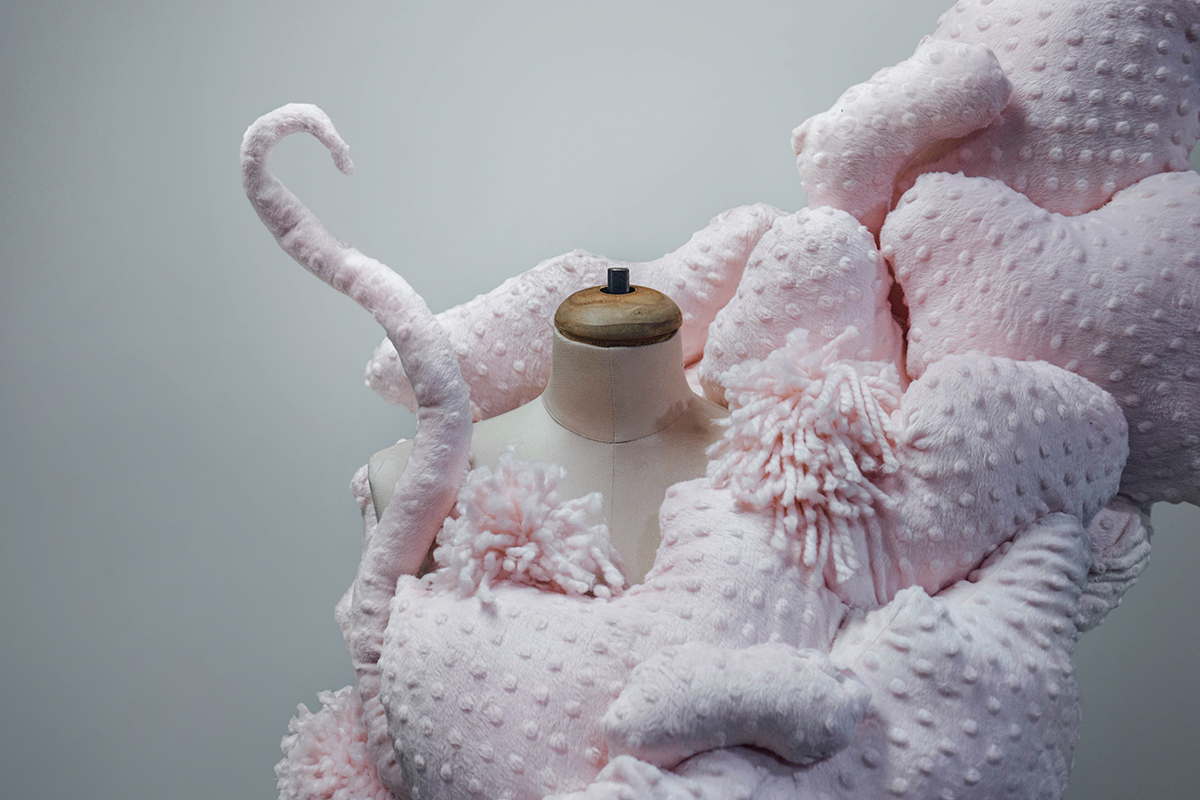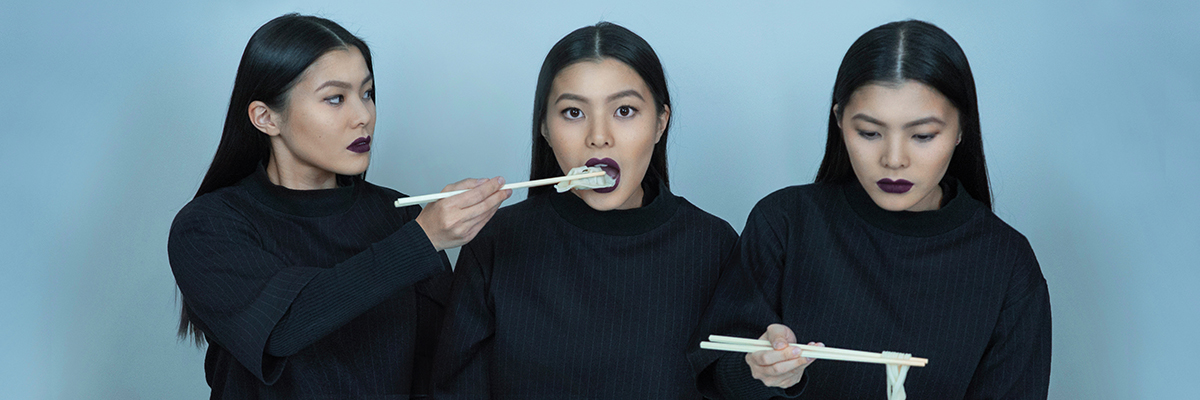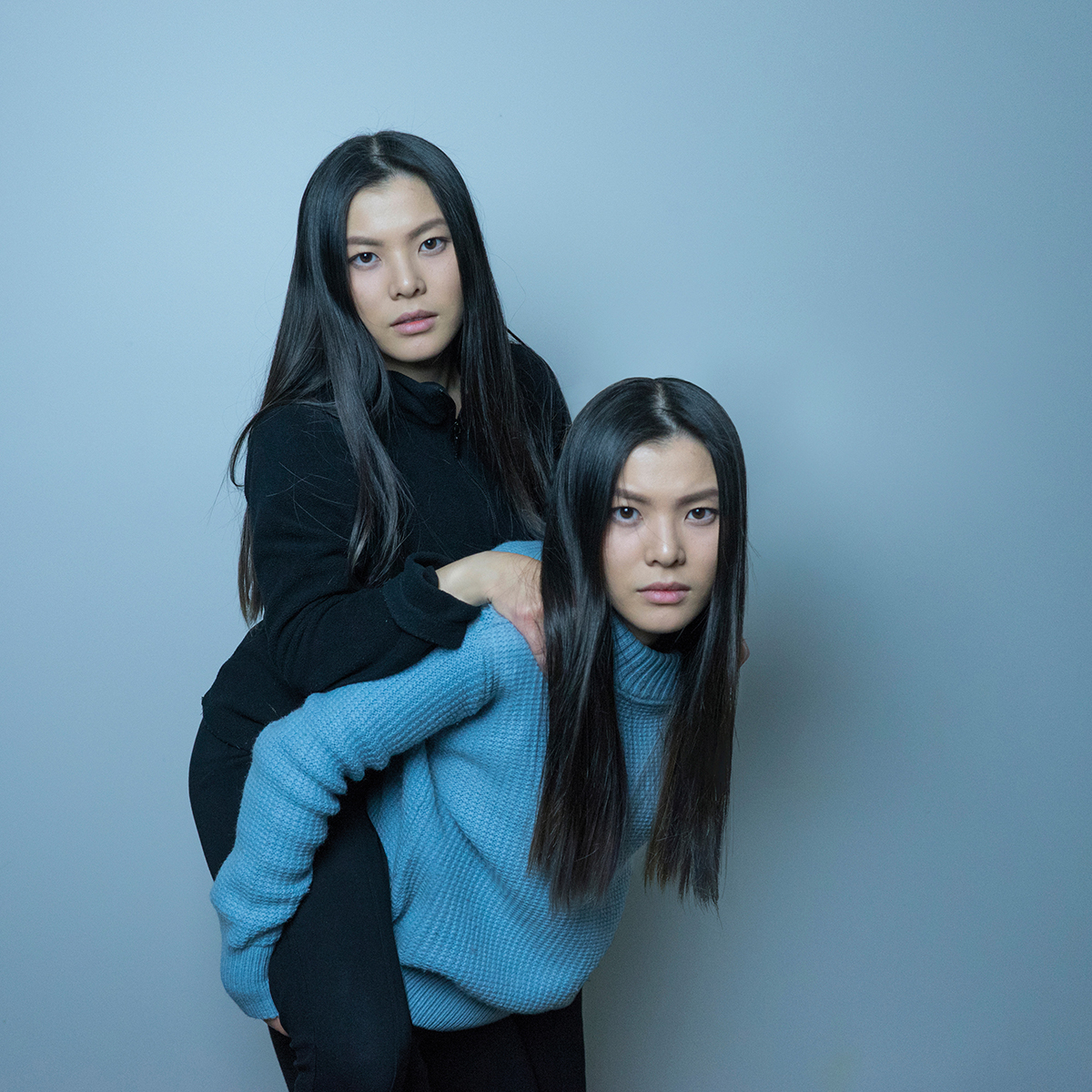
Gwan Tung Dorothy Lau: playing out para-selves
We first spotted the work of Gwan Tung Dorothy Lau in the catalogue for this year’s HATCHED National Graduate Show at Perth Institute of Contemporary Arts. Her work titled Para-Selves consists of a series of striking double and triple images of the artist herself in various guises. The intriguing aspect of these digitally manipulated portraits is the subtle changes in expression and gesture, which make the subject appear as if she is adjusting her own image or presenting a number of versions of herself — one aggressive, another passive, or as Lau describes them, “physical interactions with my doppelgangers” — within the same frame. Lau says, “Para-Selves interrogates how these conflicting representations can paradoxically co-exist.” As well as building on this photographic self-portraiture series, she has also created installations and wearable art.
Dorothy Lau received her Bachelor of Fine Arts (Visual Arts) with distinction at Queensland University of Technology in 2016. She is currently undertaking a Master of Fine Art degree with RMIT and Hong Kong Art School. An active member of Brisbane’s local art scene before her recent relocation to Hong Kong, she was involved in an artist residency at House Conspiracy event space in Brisbane and contributed to curatorial programs with several Brisbane artist-run initiatives. She has exhibited internationally at PMQ (Hong Kong) and London Gallery West (UK) in addition to Melbourne, Sydney and Perth galleries.
In an email exchange, I asked the artist about her work and how her education has influenced it.

Para-Selves #3. 2016, Gwan Tung Dorothy Lau, digitally manipulated photograph courtesy the artist
What motivates your art-making?
Using an auto-ethnographic approach, my works initially draw from the feelings of confusion and frustration that derive from assessing my cultural identity. I have dual citizenship; I was born and raised in Hong Kong and spent the last six years in Australia to further my education. I observe the ways my cultural identity influences my experience in Brisbane and Townsville. These are important starting points but I believe that my works should not merely document and interpret my experience, or present a therapeutic process, but rather I employ this self-inquiry to relate to a greater social context. I examine the way my actions oscillate between conforming to and excessively defying generalised portrayals of East-Asian culture. By figuratively depicting that observation, I attempt to evaluate and critique the influences of Western social expectations on cultural minorities. While I provide a personal and intimate account of the notion of displacement, I acknowledge that this is a bigger social issue and experienced by millions of people in similar situations. I am now pursuing postgraduate studies in Hong Kong and relocating temporarily to see how my exploration of cultural identity will develop once it is removed from a Western context.
Who are some of the artists who’ve inspired your work?
Some key influences are Mona Hatoum, Cindy Sherman and [leading Chinese contemporary artist] Cui Xiuwen. Their works respectively inform the conceptual, methodical and formal aspects of my practice. I’ve also studied the work of Australian contemporary artists who deal with the issue of identity such as Michael Cook, Christian Thompson and Thai-Australian artist Nathan Beard. This research helps me locate my works contextually in the contemporary art landscape while also giving me insights into the rationale behind my creative decisions.
How important to your art has your university education and training been?
My undergraduate education at QUT was fundamental to developing my practice and my understanding of contemporary art. Rather than initially training our technical skills in a specific discipline, we got to develop our practice conceptually across a range of mediums and methodologies. In my first year, I experimented with all sorts of processes and materials from using clingwrap and cardboard to chopping up metal pieces using the big machines in the workshop. I think the freedom and encouragement to experiment I was given in the initial stages of the degree was critical, as it allowed me to explore art beyond traditional painting, which, to be frank, was the only medium I was invested in before going into the course.
Being exposed to thematically curated collections of modern and contemporary art during seminars and lectures also broadened my definition and understanding of what art can be. So, initially I was allowed to go crazy and be ambitious with materials and processes. The group critique sessions and individual consultations then demanded I review what was working and what wasn’t, and where my works were situated contextually, and gradually assisted me in developing a clearer understanding of what I was doing. It wasn’t until my final year that I finally started to comprehend what themes I felt most compelled to explore in my art. The guidance and critique from the teachers were crucial. I still try to evaluate my works in a similar way after graduating. My BFA at QUT basically shaped my practice.

Para-Selves #4, 2016, Gwan Tung Dorothy Lau, digitally manipulated photograph courtesy the artist
In your show coming up later this year at Brisbane’s Artisan Gallery, you’re presenting a very different but equally paradoxical work. A sculptural piece that when worn (as in earlier showings) could be interpreted as cumbersome baggage or even some kind of enveloping entity. Then again, it’s soft and covered in pretty pink material. Even the title Gloom is contradictory.
It actually predates Para-Selves. While that series directly confronts the confusion of cultural identity, Gloom embodies a more passive response. It presents the difficult process of introspection as a burden to the body. I created Gloom as a wearable artwork using a mixture of garment-making methodologies, developed from my experience working for a fashion designer, and domestic crafting processes. The material choice of pink embossed fleece and yarn, and the craft aspect of the work connect to childhood, which I associate with safety and certainty. The work presents my desire to retreat from the feeling of displacement and reconnect to the past.
I had previously shown Gloom on a mannequin at my graduate show and on a white chair next to a dining table in a traditional Queenslander house during my residency with House Conspiracy. I was aware how differently the work operates in these situations. Gloom was my first venture in wearable art. I think there are a lot of possible extensions.
–
Gwan Tung Dorothy Lau, Gloom, Ivory Street Window Gallery, Artisan Gallery, Brisbane, 4 Oct-5 Nov
Top image credit: Gloom, 2016, Gwan Tung Dorothy Lau, photo courtesy the artist






